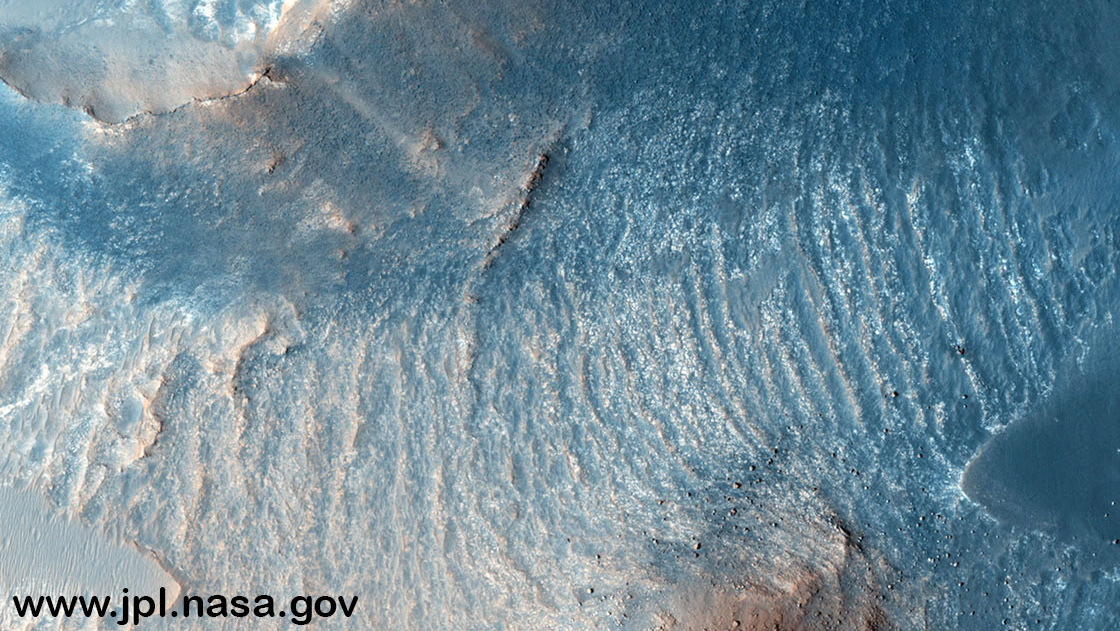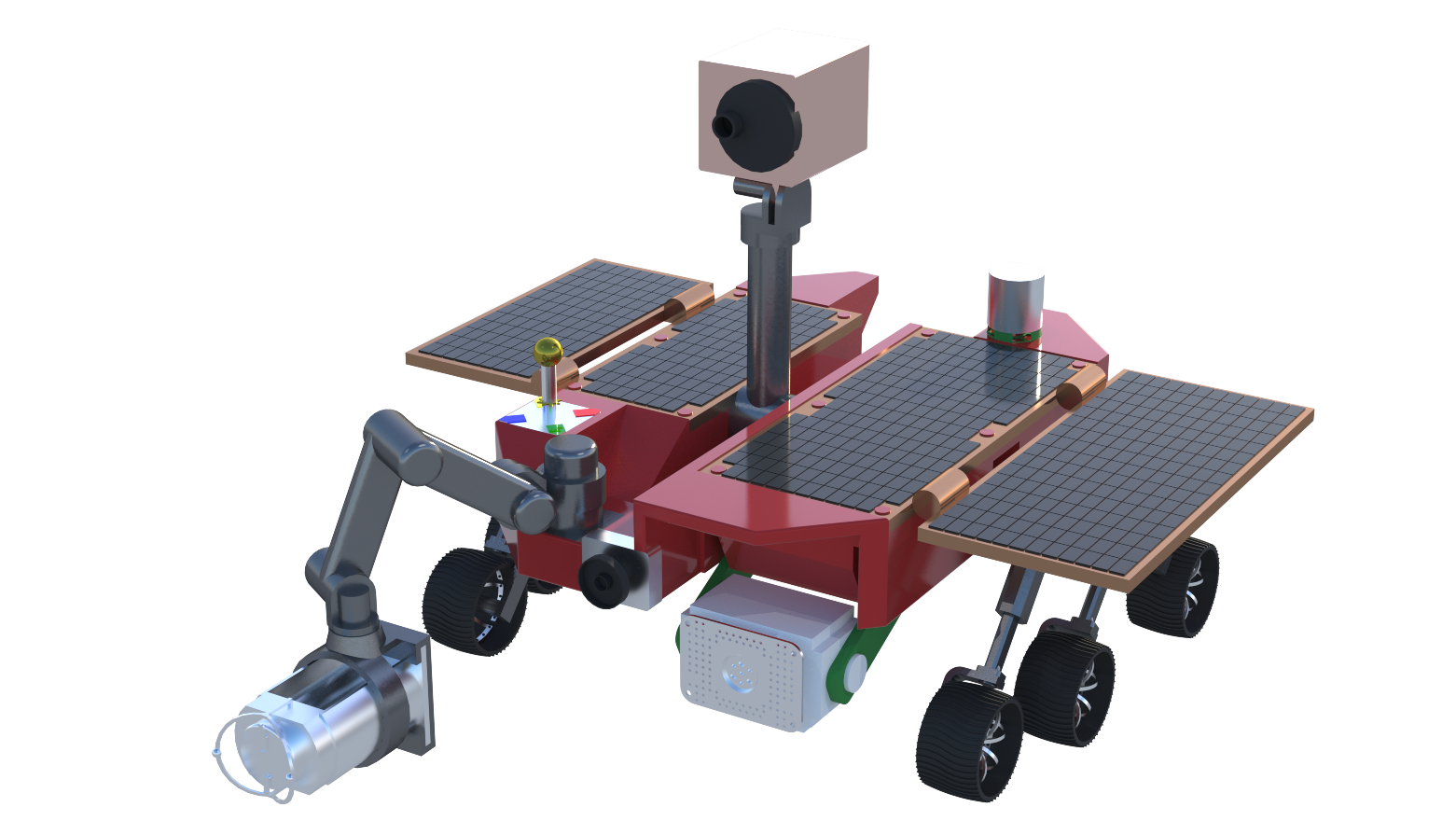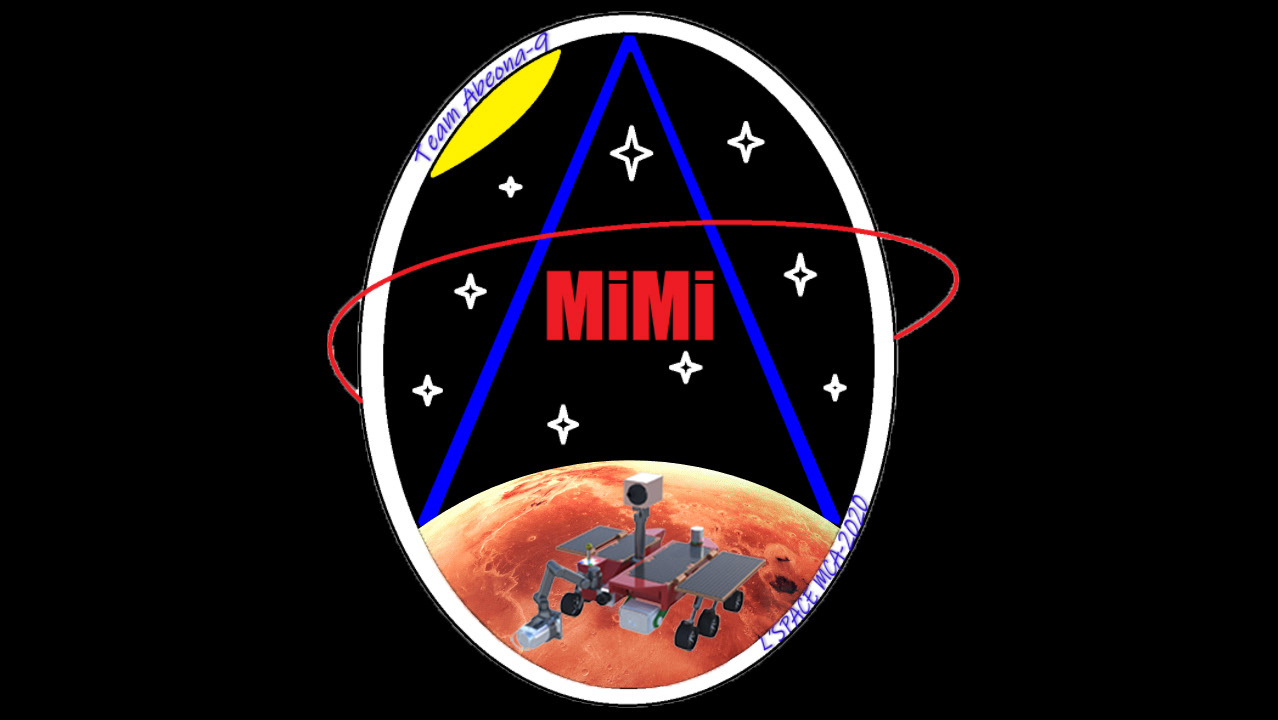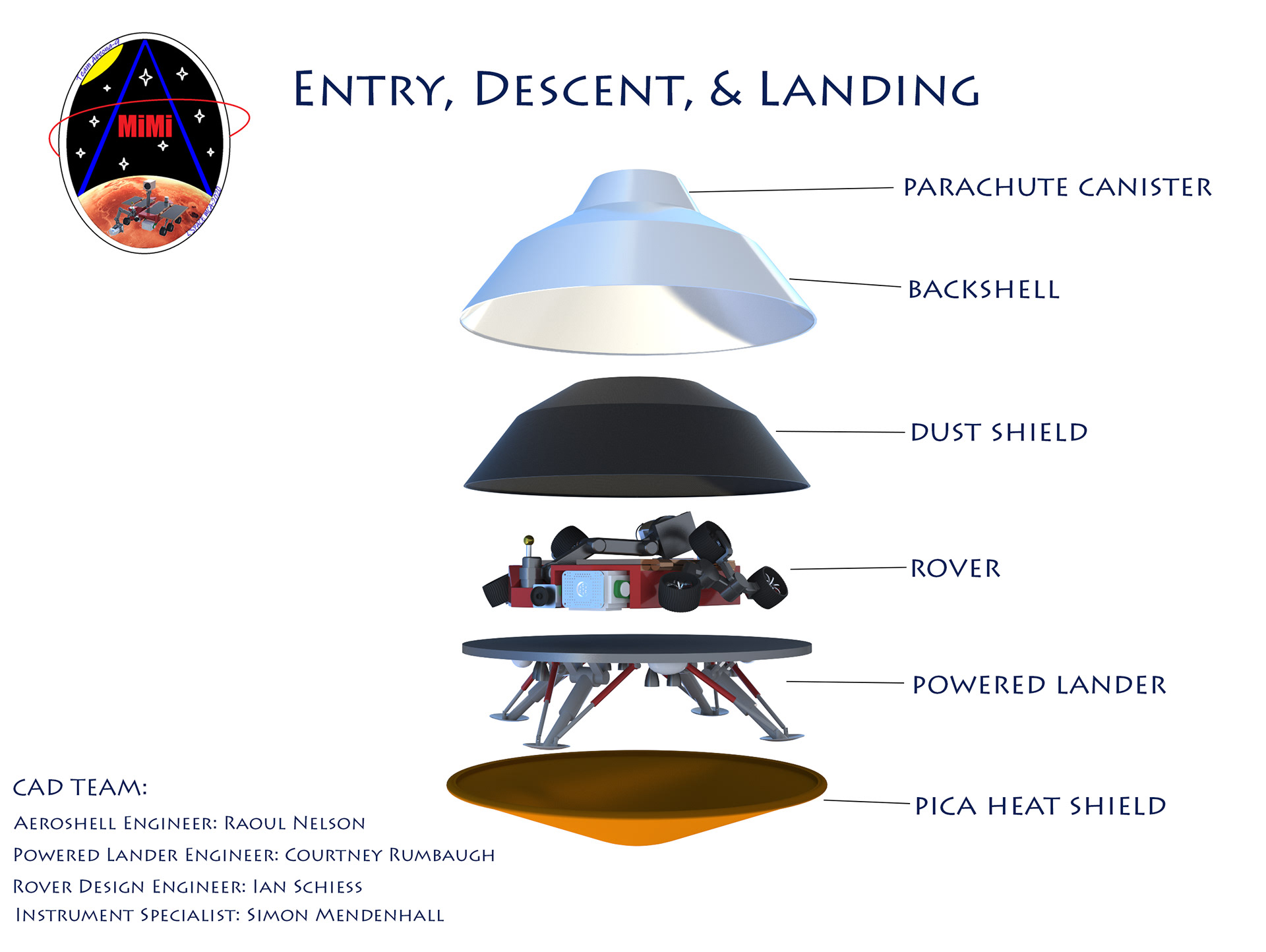
EDL exploded view
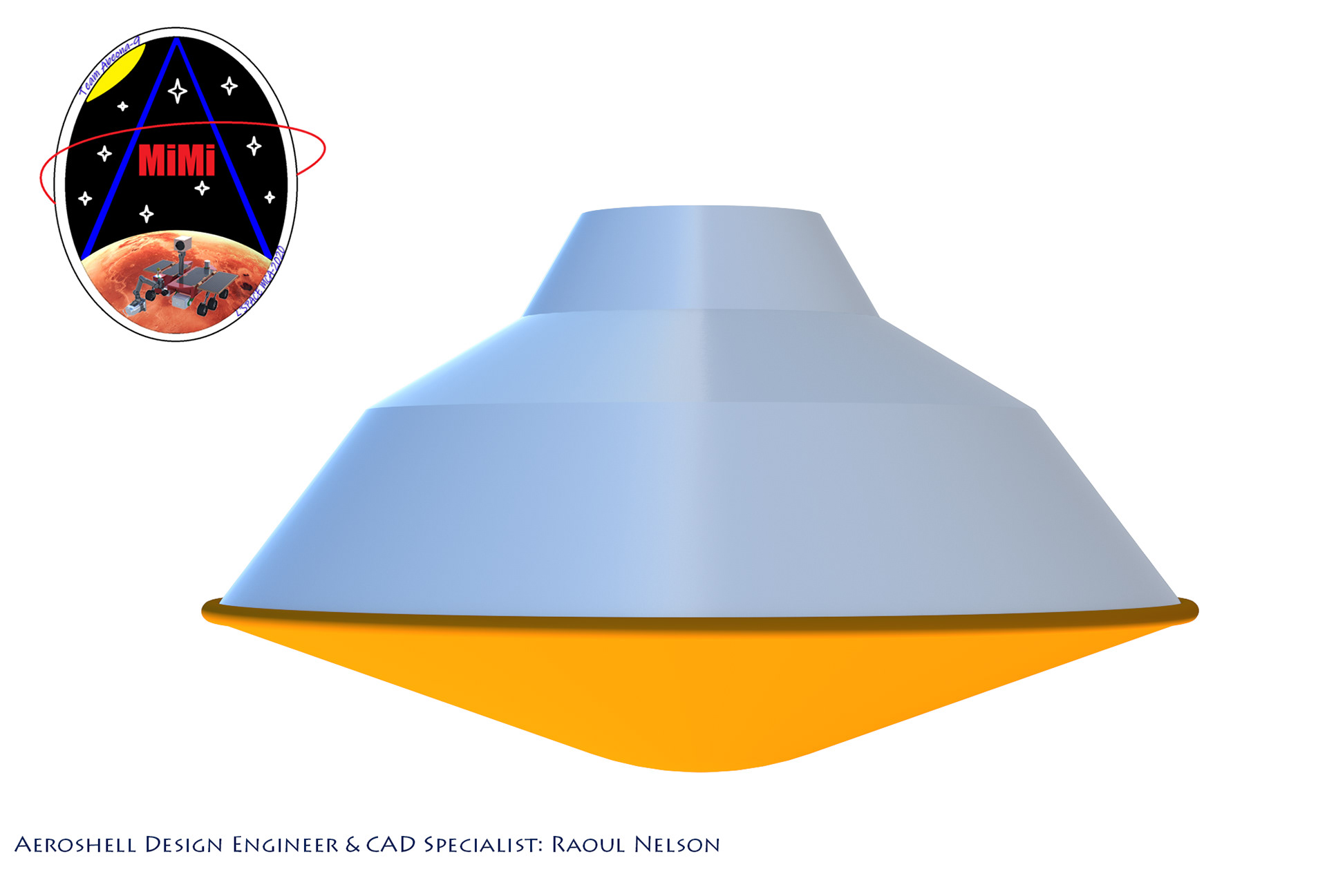
AEROSHELL

HEAT SHIELD
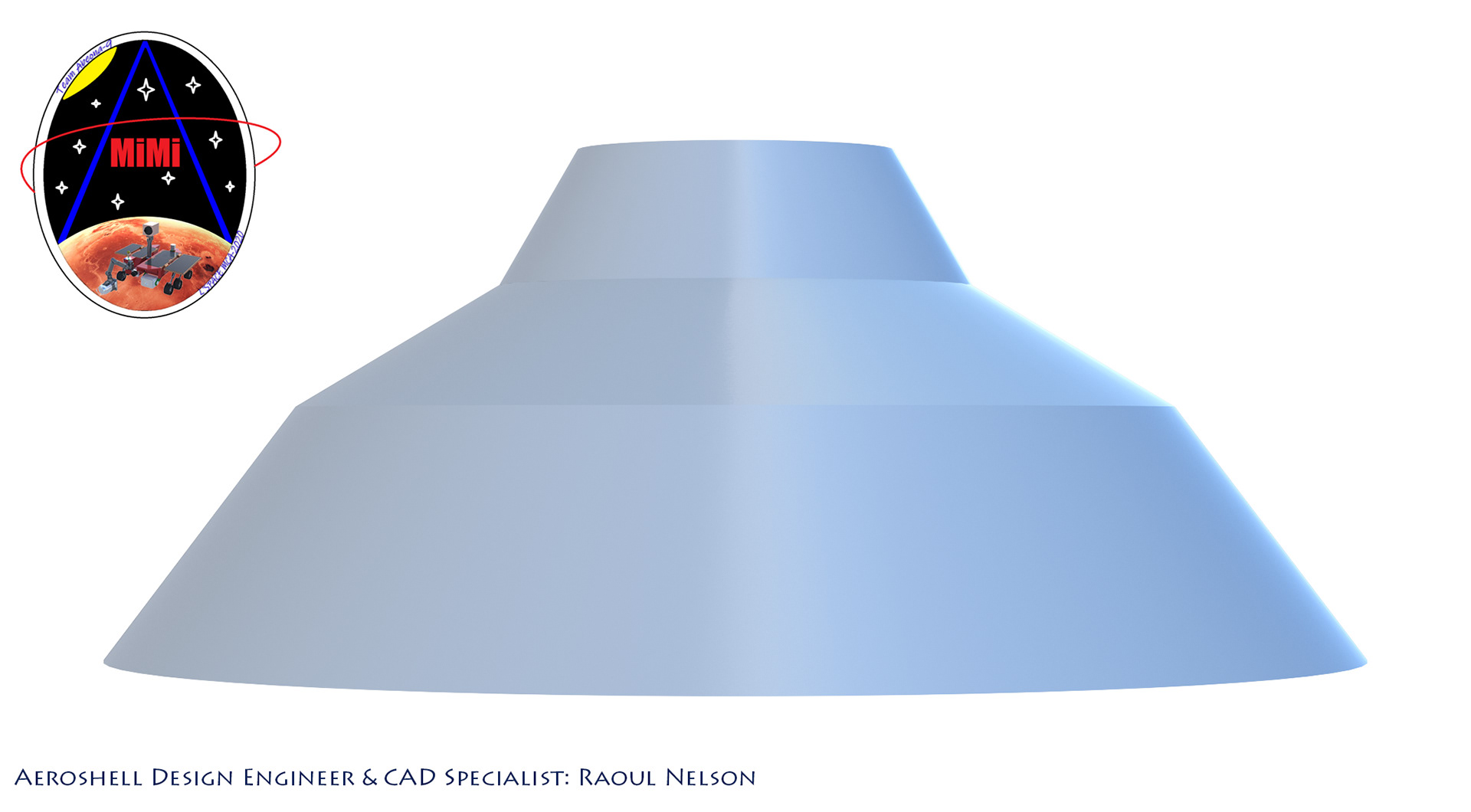
BACKSHELL
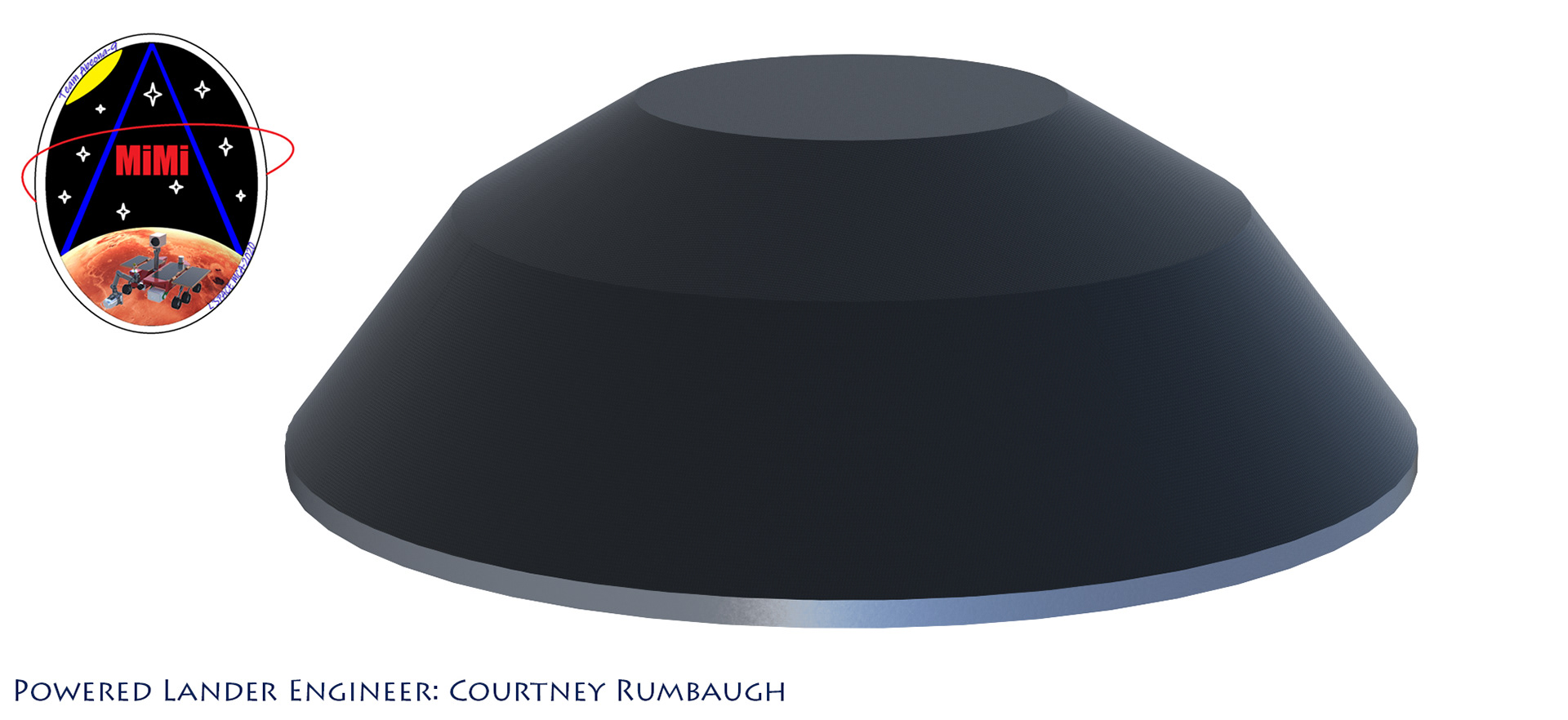
DUST SHIELD
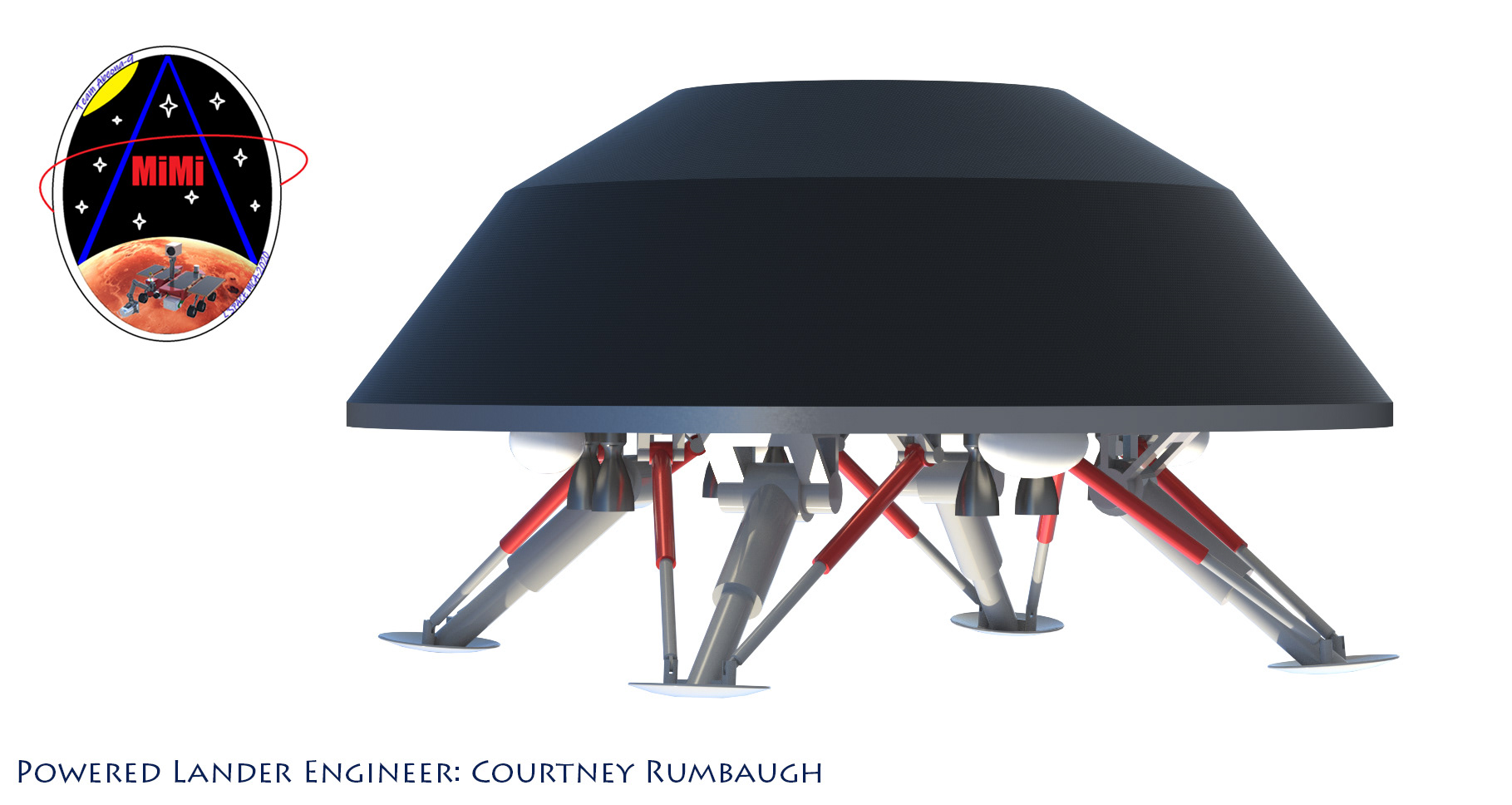
POWERED LANDER
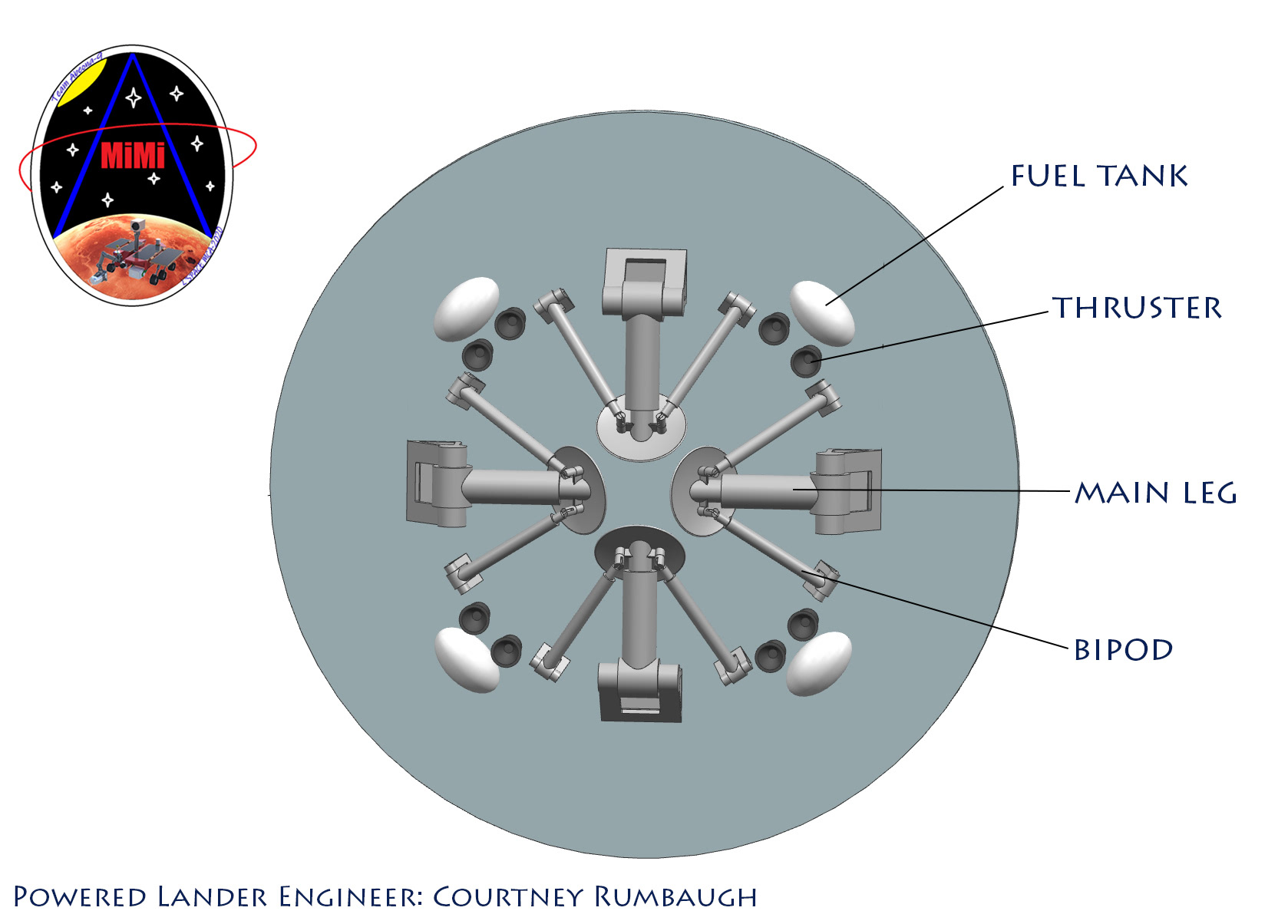
Powered Lander - Stowed, bottom view
The aeroshell’s shape, a 70-degree half-angle spherically blunted cone forebody with a triconic afterbody, chosen for its lower ballistic coefficient and sufficient aerodynamic stability, will aid in deceleration. Upon completion of peak-heating and peak-deceleration, Range Trigger will dictate when a disk-gap-band parachute deploys from the backshell. The parachute is made from durable, lightweight materials. The heat shield is detached and shortly after, both the Lander Vision System (LVS) and Terrain Relative Navigation (TRN) commence. The lander’s legs fully extend into landing configuration. Next, the parachute along with the backshell will separate from the lander. Utilization of the LVS and TRN systems will guide the lander to a prime landing spot, avoiding any hazards. The propulsion system of MR-107N monopropellant hydrazine thrusters will ultimately slow the lander’s speed to ≤ 2.4 m/s just before touchdown. After a successful soft landing touchdown at the Northeast Syrtis landing site, the lander deploys two wheel tracks and releases the Rover Securing System, allowing Marvin to drive onto the surface of its new home.
EDL operations

